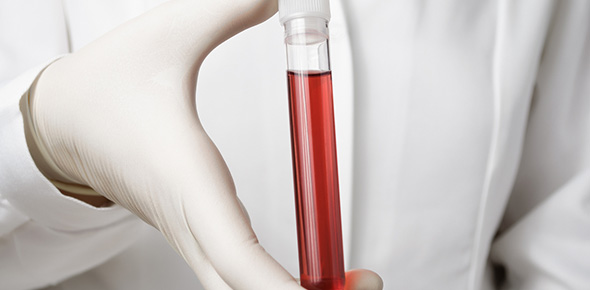Related Flashcards
Related Topics
Cards In This Set
| Front | Back |
|
Hair Follicle Infections
|
Cause: Staphyolococcus aureus (gram +)
Description: Pimples and styes are infected, plugged and inflamed hair and eyelash follicles. Infection of multiple follicles is called folliculitis. S. aureus infected hair follicles become inflamed by chemicals and enzymes secreted by both bacteria and white blood cells. S. aureus bacteria secrete toxins that kill white blood cells and enzymes that destroy follicle tissue. Hair follicles eventually become plugged and fill with pus, an accumulation of bacteria, white blood cells and cellular debris. Damage to hair follicles, skin abrasions and slivers can lead to a pus filled infection of the entire follicle and the surrounding subcutaneous tissue. These abscesses (localized collection of pus) are referred to as furuncles or boils. Boils that spread through the dermal tissue into multiple hair follicles are called carbuncles. People with diseases that impair the immune system as well as people taking medications that impair the immune system are more likely to develop boils. |
|
Scalded Skin Syndrome
|
Cause: Lysogenized* Staphylococcus aureus
Description: Toxins (exfoliatins) eminating from a small staph infection are dispersed through the blood and causes outer layers of skin to detach. *Lysogenized bacteria have been infected with a virus (bacteriophage or phage) and the virus DNA has become inserted in the bacteria’s genome |
|
Toxic Shock Syndrome
|
Cause: Lysogenized Staphylococcus aureus
Description: Abrasive tampons cause breaks in the vaginal epidermis. In some cases breaks in the vaginal epidermis lead in infection by resident Staphylococcus. LysogenizedStaphylococcus aureus strains release toxins into the blood that cause a red rash, shock* and potentially death. *Shock is a dramatic drop in blood pressure that occurs when the blood vessels rapidly increase in diameter (vasodilation). Extremely low blood pressure can cause kidney failure and death. |
|
Erysipelas
|
Cause: Streptococcus pyogenes (gram -)
Description: Streptococcus bacteria cause an infection in skin breaks. The infection is characterized by redness and swelling. Streptococcus bacteria are often more invasive thanStaphylococcus bacteria. They spread by releasing enzymes (hyaluronidase) that break down tissue connections. If infection reaches the blood it can become systemic (spread through the body) and fatal. |
|
Pyoderma
|
Cause: Streptococcus or Staphylococcus
Description: Pus* producing skin infection Impetigo – superficial pyoderma that is spread between children. Impetigo rarely goes to adults and is easily treated with topical antibiotics. * Staph and Strep produce toxins that can kill the white blood cells that the body has sent to destroy them. Pus is an accumulation of dead white blood cells and bacteria. |
|
Cellulitis
|
Cause*: Staphylococcus and Streptococcus
Description: Spreading bacterial infection in the deep layers of the skin * Small Children under six can get Haemophilus influenzae cellulites. Animal bites can result in Pasturella multocida cellulits. Fish bites and shell fish wounds can result in Erysipelothrix rhusiopathiae cellulitis |
|
Flesh –Eating Bacteria (Necrotizing Fasciitis)
|
Cause: Virulent strains of Streptococcus pyogenes (Gram +, Group A)
Description: Streptococcus bacteria cause tissue necrosis, the death of cells and breakdown of tissue, by secreting toxins and enzymes that kill cells and break down tissue. Necrotizing fasciitis is the toxin induced rapid breakdown of fibrous tissue (fascia) and fatty tissue just under the skin (p.696). Since the bacteria secreting the tissue-destroying toxins are living in the destroyed tissue, antibiotics delivered through the blood do not reach them. Destroyed tissue must be surgically removed to stop infection. |
|
Burn Infections
|
Cause: Pseudomonas aeruginosa (gram -)
Description: Pseudomonas is an opportunistic pathogen and has a relatively low level of pathogenicity; however, it is extremely tolerant of disinfectants. It isoften found growing in hospital soap containers. For this reason it is a major cause of nosocomial infections (infections acquired in a medical facility). Pseudomonas is a particular problem in burn wards. Burn patients have lost their epidermis and are extremely vulnerable to bacterial infection. Most deaths in burn patients occur as a result of infection. Pseudomonas infections cause a green discolorization of the burned area and are extreemly dangerous because they can invade the bloodstream, causing fever chills and shock (p 697). To prevent infection by opportunistic bacteria the scab that forms over burns (eschar) must be removed (debridment) daily so antibacterial creams can be applied. Since Pseudomonas is a normal flora of plants, you should never bring flowers to a burn patient. |
|
Acne
|
Cause: Propionibacterium acnes (gram +)
Description: Propionibacterium acnes is a normal flora of the hair follicles. Most species of Propionibacterium are anaerobic. An oily substance called sebum is produced by sebaceous glands in the hair follicles. Propionibacterum produce enzymes that break down sebum, releasing fatty acids that are secreted onto the skin. Normally this is a beneficial process because it acidifies and softens the skin. However, increased production of the hormone, testosterone, during puberty (both males and females produce testosterone) can cause overproduction of sebum. Excess sebum production results in blockage of hair follicles. Pore blockage causes overgrowth of Propionibacterium, inflammation and accumulation of white blood cells (pus).Scaring is caused by bacterial digestive enzymes, inflammation and breaking open of the abscess. An interesting note is that swiss cheese is made by fermenting milk withPropionibacterium. The unique acidic taste of Swiss cheese comes bacteria-produced propionic acid. |
|
Other Pseudomonas infections
|
If pools and Jacuzzis are not chlorinated properly or if they become soapy, they can become contaminated with Pseudomonas. Pseudomonas infested pool and jacuzzi water can cause swimmers ear and folliculitis respectively. Outdated shampoo and makeup can also contain significant amounts of Pseudomonas. Poorly cleaned contact lens can also harbor dangerous levels of Pseudomonas and cause eye infections.
|






